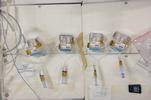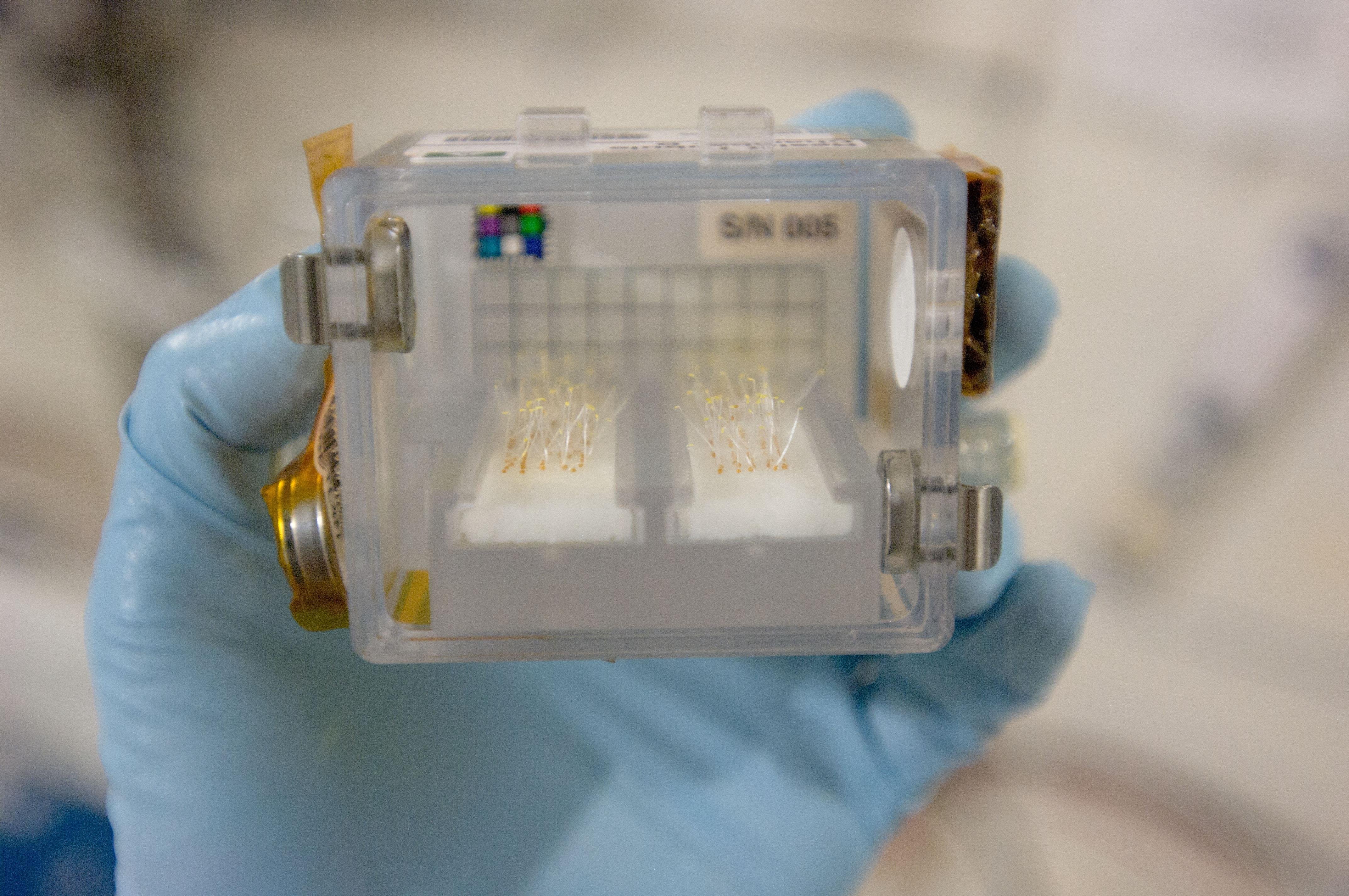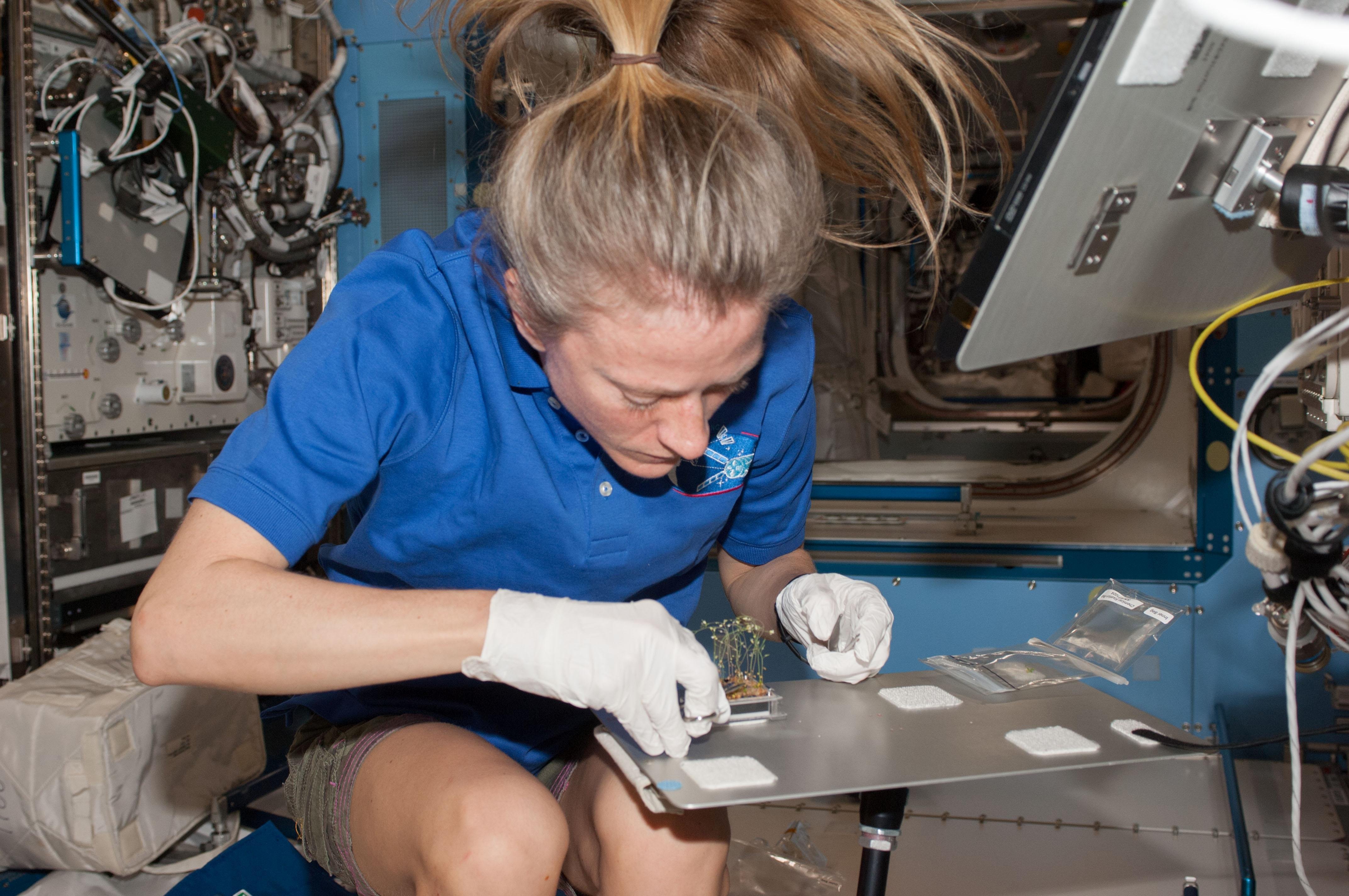- completed
[Resist Tubule]
Mechanisms of Gravity Resistance in Plants: From Signal Transformation and Transduction to Response
- Biology and Biotechnology
ISS Science for Everyone
SCIENCE OBJECTIVES FOR EVERYONE
Mechanisms of Gravity Resistance in Plants - From Signal Transformation and Transduction to Response (Resist Tubule) clarifies the mechanisms of gravity resistance. Gravity resistance is a principal gravity response in plants, and plays an important role in the transition of plant ancestors from an aquatic environment to a terrestrial environment (about 450 million years ago), and in the consequent establishment of land plants. This present study clarifies the mechanisms of gravity resistance, in particular the processes from signal transformation and transduction, to response.
Experiment Description
RESEARCH OVERVIEW
- Mechanisms of Gravity Resistance in Plants - From Signal Transformation and Transduction to Response (Resist Tubule) examines modifications of nature of cellular components responsible for gravity resistance under microgravity conditions in space.
- The contribution of membrane rafts and cortical microtubules to gravity resistance is confirmed. The contribution of cortical microtubules is quantified.
- The basic mechanism of gravity resistance will be clarified, which greatly deepens our knowledge of plant responses to the gravity signal.
DESCRIPTION
Gravity resistance is a principal gravity response in plants, comparable to gravitropism, and has played an important role in the transition of plant ancestors from an aquatic environment to a terrestrial environment about 450 million years ago and in the consequent establishment of land plants. Nevertheless, only limited information has been obtained for the mechanism of gravity resistance. The ground-based experiments using hypergravity conditions have shown that membrane sterol rafts and cortical microtubules play an important role in signal transformation and transduction and that an increase in cell wall rigidity as the final response is mediated by the structural continuum or physiological continuity of these cellular components. The present study will clarify the mechanisms of gravity resistance, in particular the processes from signal transformation and transduction to response.
Media Gallery




Applications
SPACE APPLICATIONS
Information on the mechanism of gravity resistance, brought about by the present study, will enable efficient plant production indispensable for human life in space.
EARTH APPLICATIONS
Information on the mechanism of gravity resistance, brought about by the present study, will enable efficient plant production indispensable for human life not only in space, but also on earth.
Operations
OPERATIONAL REQUIREMENTS AND PROTOCOLS
Run1: Four kinds of mutants are grown in Chamber A and gotten fluorescence images using CB microscope and optional CCD camera. Run3: Three kinds of mutants and wild strains are grown in Plant Exp Unit. Plants growth images are acquired daily from 4 chambers for 32 days. After 32 days of growth, crew retrieves Plant Chambers. Eight KSC fixation tubes are stowed at 2 C for 5 days and transferred to -95C and recovered in -95C.
Run1: Four Chamber A containing dry Arabidopsis seeds are lunched with chamber A holders at cooled temperature. Two kinds of mutants are grown in one chamber A, total 4 kinds of mutants in 2 chambers. Crew will give water to the chambers and insert into MELFI at +2C for germination start. After 4 days , the chambers will be moved to CBEF for growth for 3 days. After growth, plant seedlings in the chambers are observed using fluorescence microscope in CB, combined with EMCCD camera.Run3: Four Plant culture chambers containing dry Arabidopsis seeds are launched in Plant Exp Unit (1 chamber in 1 Unit). Three kinds of mutants and wild strains are grown in Plant Exp Unit automatically with daily image acquiring. After 32 days of growth, crew retrieves Plant Chamber and harvests plants, then fixed using KSC fixation tubes. KSC fixation tubes are stowed at 2 C for 5 days and transferred to -95C and recovered in -95C.
Publications
PRINCIPAL INVESTIGATOR(S)
HOSON Takayuki [Osaka City University]
Unless specified otherwise, rights to all images belong to ©JAXA



